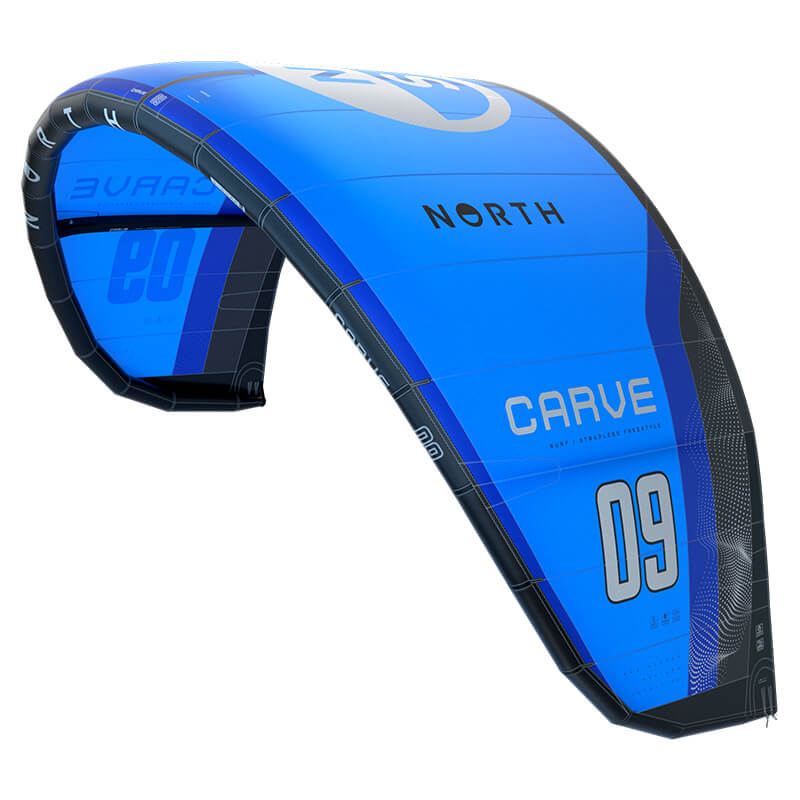When you purchase gear through links on our site, we may earn a small commission. Here’s why you can trust our tests and our affiliate partner.

The North Carve has been a perennial feature in the range every season, and a kite we look forward to testing. With such an established discipline as waveriding, it’s always fascinating to see how they’ve tweaked it. Over the years, and several product refreshes later, we’ve gradually felt the kite get leaner and more agile, but retain its overarching feeling of solidity. Like most modern wave kites it’s built on a three-strut platform to maximize the rigidity of the airframe through wide and variable wind strengths and promote a high level of control in gusts. Materials utilized this season include N-HTRS High Performance canopy material, and for the tubes and reinforcements N-Dure2 Dacron Airframe. These keep things robust and light, and give the Carve a high-end finish and make it easy enough to repair. The bladder material is also the Airlight version from North, lowering the overall weight of the kite more significantly than you’d expect, and helping improve early flying and low end.
The 2025 has had a major bridle overhaul with increased responsiveness in mind. The canopy layout and seaming has been refined to be even cleaner than previous. Its aspect ratio remains on the lower to mid-range, but the bridling seems to make the kite pull forwards well, and the upwind ability is more than you’d expect from a canopy that shape. There’s a little more sweep in the wingtips than the previous and from the underside it’s noticeable that the kite projects plenty of pulling area to the wind, so although certainly a mid-aspect kite it behaves far more efficiently.
One of the standouts of the 25 Carve is how linear the power delivery is throughout the depower range, and the way the canopy remains taut and responsive throughout such a wide range of sheeting angles. The bar pressure also seems a little lighter than previous, without losing any of that all-important feedback, so you can still watch the wave rather than the kite or rely on timing. It’s a very easy kite to fly and you dial into it more or less immediately. There’s an exceptionally solid character about the Carve, it’s very difficult to make it flustered, and there’s an impressive lack of any flapping or vibration even on full depower. The fore and aft stability has always been super dialed in on the Carve and this remains, within the realms of physics it rarely tips forward or back-stalls. It’ll just hover and give you plenty of time to catch it if you’ve put it in an awkward position.
Almost every year the Carve has a little more weight shaved off it and it becomes more efficient and widens the range of use. It’s a brilliant example of how to improve a product’s performance without alienating the user base, with sensible incremental steps. It climbs brilliantly even on slack lines and whilst the turning is snappy enough, it’s not overwhelmingly fast to turn meaning the power delivery is smooth rather than spiky. It produces a super smooth power surge through the pivotal turning. The way it will climb after a powered bottom turn is going to give anyone that likes to hack at a face a massive grin.
The North Carve is amongst the most stable and solid wave kites on the market, predictable and difficult to fluster. Its balance and poise is impressive, and its handling and efficiency improvements this year give it a wider bandwidth of use between both offshore and onshore conditions.
